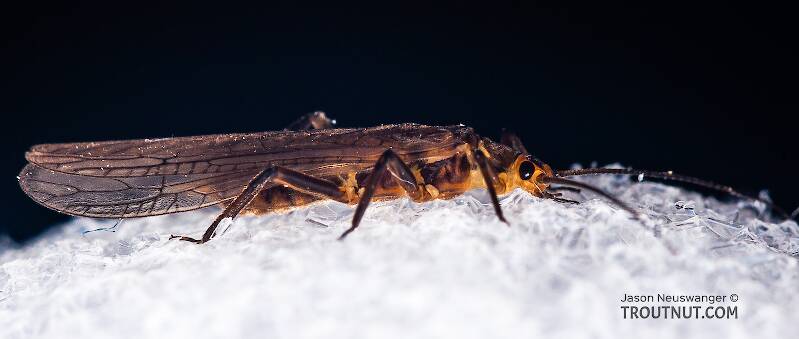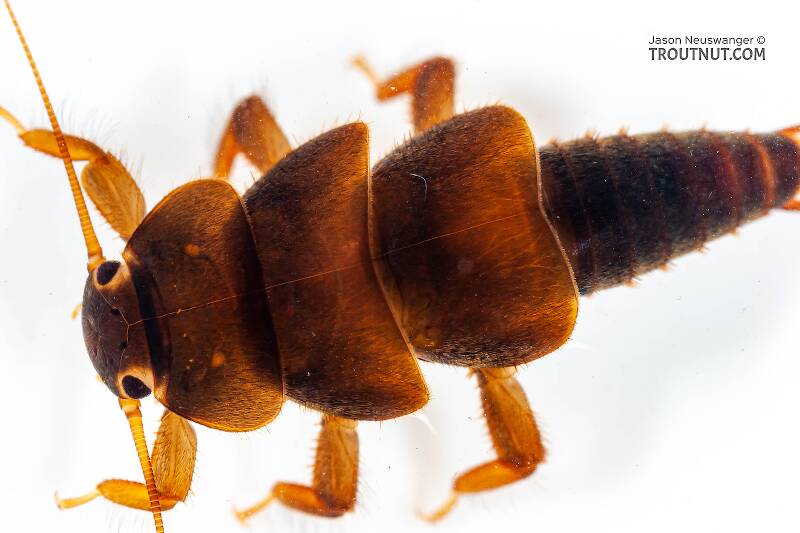
Hex Mayflies
Hexagenia limbata
The famous nocturnal Hex hatch of the Midwest (and a few other lucky locations) stirs to the surface mythically large brown trout that only touch streamers for the rest of the year.
Featured on the forum

I was not fishing, but happened to be at an unrelated social event on a hill above this tiny creek (which I never even saw) when this stonefly flew by me. I assume it came from there. Some key characteristics are tricky to follow, but process of elimination ultimately led me to Sweltsa borealis. It is reassuringly similar to this specimen posted by Bob Newell years ago. It is also so strikingly similar to this nymph from the same river system that I'm comfortable identifying that nymph from this adult. I was especially pleased with the closeup photo of four mites parasitizing this one.

Troutnut is a project started in 2003 by salmonid ecologist Jason "Troutnut" Neuswanger to help anglers and
fly tyers unabashedly embrace the entomological side of the sport. Learn more about Troutnut or
support the project for an enhanced experience here.
Roachflies
This common name refers to only one family. Click its scientific name to learn more.
Stonefly Family Peltoperlidae
These are very rarely called Roachflies.
These stoneflies, known for their roach-like shape, are not really mentioned in books about angling. They are a major component of the invertebrate fauna in a few streams, which are presumably few and far between. Since their robust shape is so distinct, I speculate that a special nymph pattern would pay off on the rare waters where they are major insects.

The adult stoneflies of this family look surprisingly normal given the strange shape of the nymphs. I tried to identify it beyond family level 15 years after collecting it, based on my photos, which are not ideal. It's difficult even to tell the gender for sure because I don't have a good picture of the terminalia, but the body size suggests it's a male, and the species ranges suggest either Peltoperla arcuata or a male Tallaperla maria. One distinctive feature of the original description of this species is that the antennae are paler for a short distance beyond the first two thick, dark segments. That can be seen on this specimen and on a specimen on BugGuide identified as Tallaperla maria.

I'm guessing this is an immature Peltoperla, because it lacks the well-developed setal fringe on the hind femora that would indicate Tallaperla, but it also lacks the dark spots that should indicate a mature Peltoperla nymph.
See 3 more specimens...

